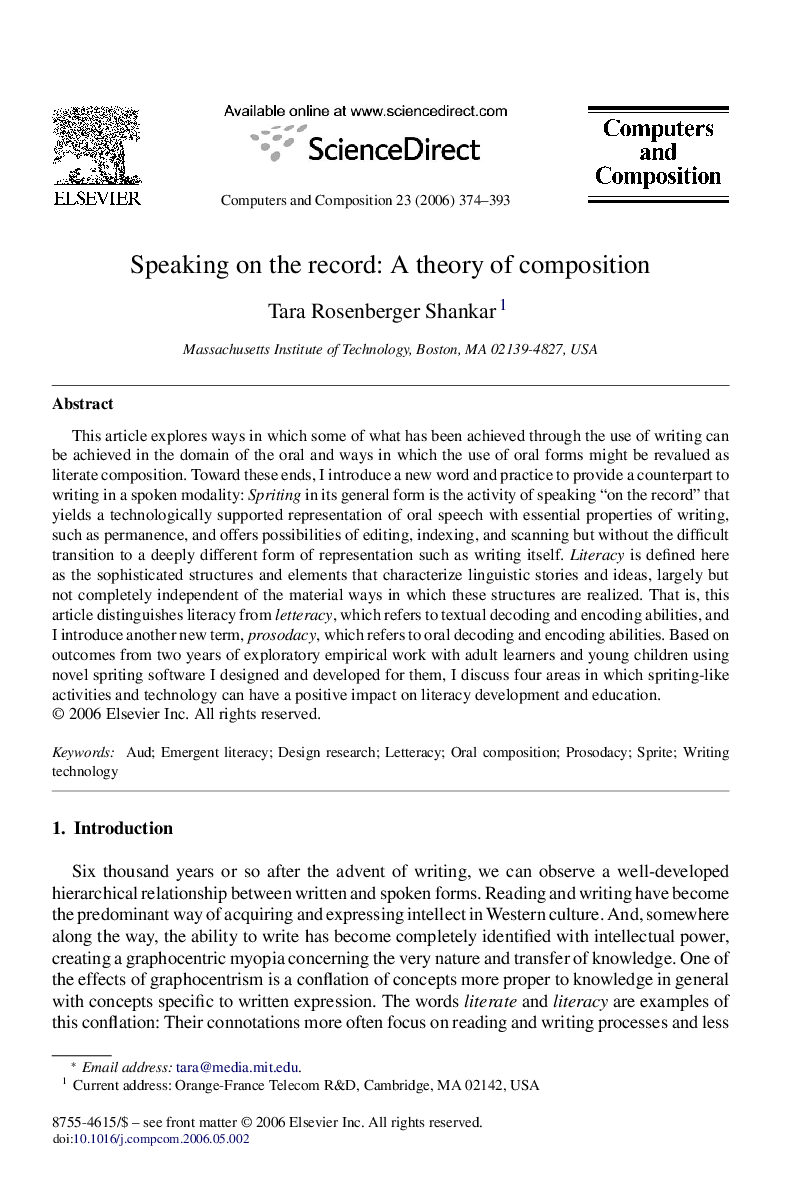| Article ID | Journal | Published Year | Pages | File Type |
|---|---|---|---|---|
| 347898 | Computers and Composition | 2006 | 20 Pages |
This article explores ways in which some of what has been achieved through the use of writing can be achieved in the domain of the oral and ways in which the use of oral forms might be revalued as literate composition. Toward these ends, I introduce a new word and practice to provide a counterpart to writing in a spoken modality: Spriting in its general form is the activity of speaking “on the record” that yields a technologically supported representation of oral speech with essential properties of writing, such as permanence, and offers possibilities of editing, indexing, and scanning but without the difficult transition to a deeply different form of representation such as writing itself. Literacy is defined here as the sophisticated structures and elements that characterize linguistic stories and ideas, largely but not completely independent of the material ways in which these structures are realized. That is, this article distinguishes literacy from letteracy, which refers to textual decoding and encoding abilities, and I introduce another new term, prosodacy, which refers to oral decoding and encoding abilities. Based on outcomes from two years of exploratory empirical work with adult learners and young children using novel spriting software I designed and developed for them, I discuss four areas in which spriting-like activities and technology can have a positive impact on literacy development and education.
